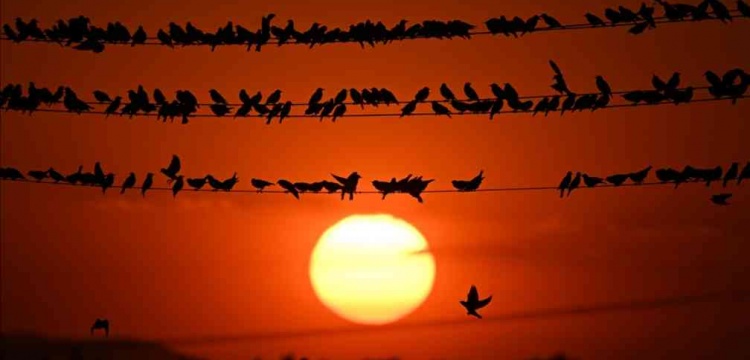Climate change shapes bird reproduction patterns, favoring smaller species: Study
Larger-bodied migratory birds are reproducing less, while sedentary species of small-bodied birds tend to produce more offspring under similar conditions, according to an international study focused on the impact of climate change on bird reproduction.
Small-bodied birds, often referred to as songbirds, adapt to their environment's conditions much faster. These birds are less impacted by global warming, while larger-bodied non-songbirds are more affected, ecologist Ilhami Kiziroglu told Anadolu.
Discussing a study conducted by the Proceedings of the National Academy of Sciences (PNAS) on the effects of climate change on bird reproduction, specifically examining annual offspring production, Kiziroglu at Ostim Technical University in Türkiye's capital Ankara said smaller birds, which adapt more easily to changing conditions, also possess high levels of reproductive energy.
These birds can lay eggs 3-4 times a year, producing a significant number of offspring during each breeding period, he said.
Highlighting the challenges faced by large-bodied birds in adapting to their environments due to their size and their tendency to lay only a few eggs, Kiziroglu said: "In ecology, there is a rule that for successful reproduction of a species, the reproductive energy must be competent and sufficient. Without this, it is impossible to increase the population of any species in a given area."
While migratory patterns are shifting, these changes have a lesser impact on small birds since they naturally produce multiple generations in a single year.
Birds of prey, including cormorants and herons, breed only once a year. Consequently, the timing of their breeding season must synchronize with their specific living conditions, Kiziroglu said.
Despite the recognition of greenhouse gases' importance on the global stage, Kiziroglu says substantial actions remain lacking. With a temperature increase of 1C to 3C (37F) globally, ice masses in the Palearctic region are melting swiftly, leading to a reversal of Ice Age events. These changes disrupt the biological rhythms of living organisms, underscoring the urgent need for effective measures.
The research observed changes in yearly offspring production by female breeders across 201 populations of 104 bird species globally between 1970 and 2019.
While the average offspring production has decreased in recent decades, variations among species and populations were significant.
The study revealed that 56.7% of the birds experienced a decrease in their reproduction rates, while 43.4% witnessed an increase. The most significant decline was observed in the reproductive rates of migratory birds.
The study also showed that climatic shifts affect offspring production through compounded impacts on species' ecological and life history traits.
Multi-brooded species have improved breeding with increasing temperatures, contrasting with single-brooded species.








 Buz devrinde 16 aylıkken ölen bebeğin mavi gözlü olduğu anlaşıldı
Buz devrinde 16 aylıkken ölen bebeğin mavi gözlü olduğu anlaşıldı  Ayanikola Kilisesi Restorasyon ve Çevre Düzenleme Projes hayata geçiriliyor
Ayanikola Kilisesi Restorasyon ve Çevre Düzenleme Projes hayata geçiriliyor  Tarihi Kentler Birliği'nin ekim ayı encümen toplantısı, Şanlıurfa'da yapıldı
Tarihi Kentler Birliği'nin ekim ayı encümen toplantısı, Şanlıurfa'da yapıldı  Yazma Eserler uzmanı Prof. Dr. Kasım Al-Sâmerrai: Oryantalistler dilin fıkhını bilmiyor
Yazma Eserler uzmanı Prof. Dr. Kasım Al-Sâmerrai: Oryantalistler dilin fıkhını bilmiyor 




